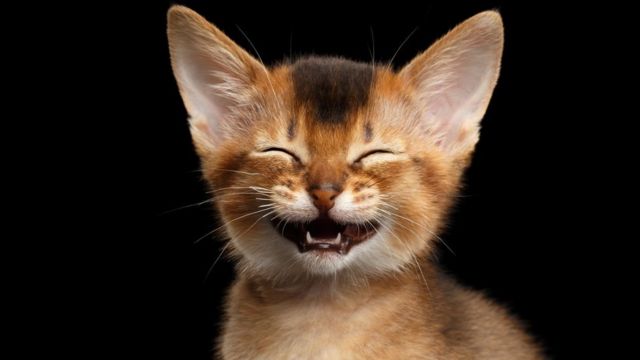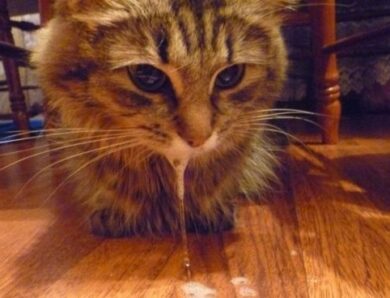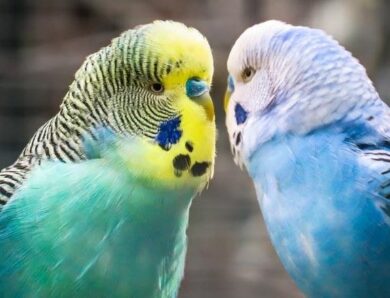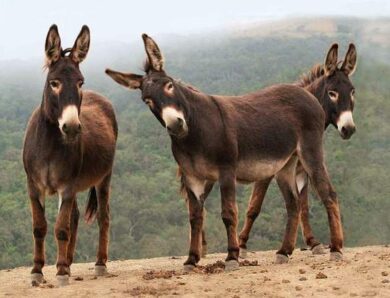
How many teeth does a cat have??
One of the indicators of a kitten's health is its teeth. Their number and structure was formed taking into account the natural needs - protection, food, hunting. When cats began to live with humans, their way of life has changed significantly, but the structure of the jaw - no. How many teeth does a cat have?, how they grow and form?
How many teeth do cats have??
Cats are carnivorous mammals, so they first have baby teeth, and then permanent. How many teeth does a cat have before they change?? Up to 10 weeks of life in kittens already 26 milk teeth, and after 3 months they will change. The first cat teeth are much smaller and sharper, than the teeth of adult cats, the change itself is completely painless for the baby. And children's nicknames do not fall out, until adults erupt, so when changing some teeth to others, can be seen, as a kitten has two pairs of fangs at once. In rare cases, these children's fangs have to be pulled out by the owner or in the clinic.
The cat's body is stunning with its protective functions. That the kitten did not pick up an infection at change of tooth structure, a special substance appears in saliva during this period, having antibacterial properties. It is called lysozyme. So the kitten is protected from oral infections. But, that this substance was sufficient, a good diet is very important for a kitten. If you noticed, that the child began to change her sharp teeth, then take care of a diet rich in minerals and vitamins. Moreover, that during the period of growth they are very necessary for kittens. But until all the permanent teeth appear, kitten vaccinations should be forgotten. His body is quite heavy, so vaccination is now very dangerous. IN 6-7 months in Kitten already all teeth will be permanent.
It is interesting! Newborn kittens are born completely defenseless. Little of, that they are blind and deaf, so they still have absolutely no teeth. Only up to three weeks, they get cutters, these are baby nicknames, the premolars are cut last. Teeth change in the same order, only the molars are growing.
If the kittens 26 teeth, how many teeth a cat has? An adult kitten on 4 pieces more - 30 hefty white teeth. They become more due to the appearance of four molars. The structure itself is also changing: the cat's teeth become thicker, less acute, and an order of magnitude larger. And how many teeth a cat has?
- 12 incisors - on 6 on each jaw;
- 4 fangs - on 2 on each jaw;
- 10 too much. Their 6 on the upper jaw and 4 at the bottom;
- 4 molars - after 2 on each jaw.
Importantly! Information on different numbers of molars and premolars is possible. Sometimes indicated, that premolars in cats 8, and molars 6.
Features of teeth in cats
Now it is known, how many teeth an adult cat has, and this figure is different from the human. And not only their number is different, but also the construction of the jaw, even the structure of the teeth in kittens is somewhat different. It is understandable, after all, the cat and her way of life, as well as the necessary food, very different from human.
What is the structure of cat teeth?
The overall structure is a bit like human, even consists of approximately the same parts. This is not just about cats, and in general most animals. Here, nature decided not to twist too much and did everything under one template. In cat teeth there is:
- Pulp. Actually, it is the core, which makes it "alive". It has its own rather complex structure, which is just different for everyone. The pulp has blood vessels and nerve endings, which give pain when injured, react to cold and hot.
- Dentin. It covers the pulp and slightly protects it from the reaction of nerve endings.
- Enamel. The hardest and most protective part. Enamel has no nerves, therefore absolutely not sensitive. But if it is chipped or cracked, the cat will feel pain.
The structure of the cat's jaw
There are four types of cat teeth. And each of them performs its important function in the jaws of kittens. Zubichiki also differ in shape, and by location in the maxillary apparatus. Cats have teeth:
- Cutters. The smallest teeth, located between the canines. Their on 6 pieces at the top and as many at the bottom. The cat is not used to chew food. Their main function is to capture prey during hunting, holding and tearing off large pieces of food.
- Fangs. The longest teeth in cats. Initially, it was cats who killed their prey with their fangs, they also help keep food. Fangs are not the only "protruding" teeth, but also planted deeper than all. They are fixed in the jaws by ligaments. in addition, fangs are the strongest of all cat teeth.
- Premolarity. Bigger teeth in kittens, which they chew food. Their cats 6 on the upper jaw and 4 at the bottom. Premolars are the easiest way for cats to chew fish and meat, other soft and not very hard food.
- Molars. The largest and strongest cat teeth. Only them 2 above and the same on the lower jaw. It is thanks to molars that a domestic cute kitten can easily handle bones and other solid foods.
Don't forget to check your cat's mouth regularly, so as not to miss the beginning of any problems. Source: Flickr (Julie)
Age and teeth of a kitten
Due to that, that teeth in cats arise, change and erase at about the same time, it is possible to determine the exact age of furriers. Some breeds of cats may have slight differences in timing, but there will still be no significant run-up.
- If the kitten is completely toothless, then he is no more 10 days.
- If the cutters have already begun to cut, then he is already two weeks old.
- If the baby's incisors change, then he is at least 3 months old, but not more than 4 and a half.
- If the cat changes its fangs, then he is from 5 months to six months.
- If the kitten has already grown all 30 teeth, then he is no less 8 -we are months.
- Up to a year, cats' teeth are snow-white and slightly translucent.
- By the age of two, the teeth are already a little yellow, tartar may appear, and the cutters are slowly ground.
- By the age of five, the cutters are noticeably worn out, and becomes visible, that began to grind the lower fangs.
- After the tenth birthday, teeth gradually fall out, but this process may begin earlier.
- After the age of fifteen, cats rarely have all their teeth.
Importantly! Changes in the teeth may begin earlier. Still, nutrition and care conditions are very important, pet care. Homeless cats and kittens with free range grind and lose teeth much earlier. And those cats, receiving additional dental care, keep teeth healthy much longer.
If the food is composed correctly, and the pet is well watched, and there are still problems with the teeth, then cats have some kind of internal disease. Especially, when a cat loses its teeth early. Early yellow teeth and rapidly growing tartar indicate rapid growth of bacteria in the mouth in cats. Most often this is due to the reaction of cat saliva and leftover food. Yellow teeth are quickly covered with tartar, which later provokes tooth loss. in addition, inflammation of the gums or palate of the animal may begin - then very serious treatment will be required.
So far such problems have not started, it is enough to manually brush the teeth of the kitten. You can remove even small tartar on your own, but large lesions must be eliminated only in a professional clinic.
Importantly! If tartar is not completely removed, then very soon it will grow back on the teeth. Therefore, it is very important to give your pet a good specialist to clean.
If visible ??reasons for the loss of teeth in cats are not observed, and the teeth still fall out, then you need to check the internal organs. The reason may be: infections, some hormonal drugs or antibiotics. Teeth can still fall out due to weak immunity and impaired metabolism.
How to protect a cat's teeth?
Take care of your teeth yourself, Unfortunately, cats can't. This task should be placed on the shoulders of the owner. To keep your cat healthy, brushing your teeth should take place at least once a month. Human toothpastes are not suitable, but you can use tooth powder and baby toothbrush. It should have natural bristles.
There are also special pastes for animals. They differ in that, that they do not need to be carefully rinsed from the mouth. Such pastes are available in pet stores.
When cleaning, do not press hard, so as not to injure the tender gums of Kitten. Moreover, that the cat is unlikely to like it, which he will let you know immediately. However, if from an early age the cat is accustomed to cleaning, that is a chance, that he will at least calmly endure.
Special cat pastes do not need to be washed off, but it is better to remove excess powder, a soft damp cloth will do. If wine and soda are used, then first brush your teeth with wine, and then rub soda there.
When a cat is strongly against interfering with his mouth, you can try special feeds. They have a special structure, which will "remove" plaque and stones. This diet can prevent diseases of the feline oral cavity.
Your pet's dental health needs to be monitored. Especially during the period of tooth growth, their changes and even more so in a solid feline age. Don't forget to check your cat's mouth regularly, so as not to miss the beginning of any problems.




